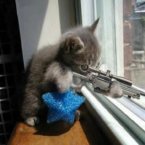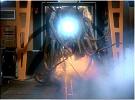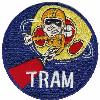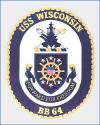Why didn't IJN ships have better AAA ?
Moderators: Joel Billings, wdolson, Don Bowen, mogami
RE: Why didn't IJN ships have better AAA ?
I also saw this in Dunnigan's "Victory at Sea." Don't have the page number right here, but there is also some great information on the AAA armaments of US vs. Japanese ships during the war.
Never Underestimate the Power of a Small Tactical Nuclear Weapon...
RE: Why didn't IJN ships have better AAA ?
You're right, my bad:
This test firing of proximity fuzed 5"/38 projectiles against drones was carried out in August 1942 aboard the cruiser [USS] Cleveland [CL-55]. Results of this test were entirely satisfactory and accordingly, full-scale production of proximity fuzes was initiated at the Crosley Corporation in September 1942. Early production was plagued with numerous difficulties but satisfactory material was finally produced. This fuze, which was designated the Mk 32, was delivered to the Fleet during November and December 1942, and the first Japanese plane was shot down with proximity fuzed projectiles by the cruiser [USS] Helena [CL-50] in January 1943.
Source: Dilley, N. E. "Development of Proximity Fuzes (VT) for Projectiles - VT Fuzes MKS 32 to 60, Inclusive (General Description)." chapter 1 of The World War II Proximity Fuze: A Compilation of Naval Ordnance Reports by the Johns Hopkins University Applied Physics Laboratory. (Silver Spring MD: The Laboratory, 1950): 1-12. [declassified 16 Jun. 1976].
Every source I see has SoDak shooting down 26 A/C on 10/26/42. Conflicting claims on the US side about who got what, but no doubt that Japan lost a lot of planes that day....
This test firing of proximity fuzed 5"/38 projectiles against drones was carried out in August 1942 aboard the cruiser [USS] Cleveland [CL-55]. Results of this test were entirely satisfactory and accordingly, full-scale production of proximity fuzes was initiated at the Crosley Corporation in September 1942. Early production was plagued with numerous difficulties but satisfactory material was finally produced. This fuze, which was designated the Mk 32, was delivered to the Fleet during November and December 1942, and the first Japanese plane was shot down with proximity fuzed projectiles by the cruiser [USS] Helena [CL-50] in January 1943.
Source: Dilley, N. E. "Development of Proximity Fuzes (VT) for Projectiles - VT Fuzes MKS 32 to 60, Inclusive (General Description)." chapter 1 of The World War II Proximity Fuze: A Compilation of Naval Ordnance Reports by the Johns Hopkins University Applied Physics Laboratory. (Silver Spring MD: The Laboratory, 1950): 1-12. [declassified 16 Jun. 1976].
Every source I see has SoDak shooting down 26 A/C on 10/26/42. Conflicting claims on the US side about who got what, but no doubt that Japan lost a lot of planes that day....
Fear the kitten!
RE: Why didn't IJN ships have better AAA ?
i know...it is confusing at times muddling through all the 'claims' Like i said the thing that made me most suspicious was the huge size of the credit vs any other warship yet it was before the VT.
Hence i tend to favor Lundstrom's accessment (he also mentioned the claim was hotly disputed by the Enterprise whose crew was none too pleased with SoDak, i think mainly because she shot a good amt of ammo at their planes!) which is backed up by Frank's analysis which claims the 5inchs were largely ineffective. SoDak of course had okis but then again so did alot other ships and THEY certainly didn't down 20-26 planes each...the Japanese wouldn't have had any planes left at all!![:D]
Hence i tend to favor Lundstrom's accessment (he also mentioned the claim was hotly disputed by the Enterprise whose crew was none too pleased with SoDak, i think mainly because she shot a good amt of ammo at their planes!) which is backed up by Frank's analysis which claims the 5inchs were largely ineffective. SoDak of course had okis but then again so did alot other ships and THEY certainly didn't down 20-26 planes each...the Japanese wouldn't have had any planes left at all!![:D]
- SouthernAP
- Posts: 27
- Joined: Wed Feb 11, 2004 12:18 am
- Location: Haze Grey and Underway
RE: Why didn't IJN ships have better AAA ?
Hold up for one second folks. We are mixing terms here and I think it is confusing some people There were two type of fuzes used by the US for AAA.
One was issued before the war and served up to 1942 and that was the VT fuze. This is where the crew manually adjust a timer on the fuze so that so many seconds after it is fired it will explode. This was a time tedious and hard thing to do in the middle of combat to adjust it so that your rounds are exploding near the target.
Then the ultimate secret weapon were even thier allies weren't shared with the information is the proxmity fuze. This employs a small radio transmitter and is designed to explode when the doppler shift occurs at a specific rate between the outgoing radio pulse and the return. This causes it to explode closer to the target and caused more aircraft to be downed from the DP guns through out the fleet and what really made the 5"/38 mounts. Proxmity fuzes were used by surface guns in the fleet and shore based artillery and would be used to have the rounds explode over the heads of the enemy and cause shapranel wounds.
There is a difference
One was issued before the war and served up to 1942 and that was the VT fuze. This is where the crew manually adjust a timer on the fuze so that so many seconds after it is fired it will explode. This was a time tedious and hard thing to do in the middle of combat to adjust it so that your rounds are exploding near the target.
Then the ultimate secret weapon were even thier allies weren't shared with the information is the proxmity fuze. This employs a small radio transmitter and is designed to explode when the doppler shift occurs at a specific rate between the outgoing radio pulse and the return. This causes it to explode closer to the target and caused more aircraft to be downed from the DP guns through out the fleet and what really made the 5"/38 mounts. Proxmity fuzes were used by surface guns in the fleet and shore based artillery and would be used to have the rounds explode over the heads of the enemy and cause shapranel wounds.
There is a difference
RE: Why didn't IJN ships have better AAA ?
The reason why the terms are mixed is because that is how the terms were used during WW2. All US AAA shells were, in effect, "variable timed" (VT). All of them could had adjustable time fuses to set the burst. No special designation was used for these.
"VT fused" was the term used at the time to refer to proximity fused shells in order to conceal the fact, from spies and loose lips, that they were, in fact, "proximity" fused and were, in fact, being triggered by a detector in the warhead.
"VT fused" was the term used at the time to refer to proximity fused shells in order to conceal the fact, from spies and loose lips, that they were, in fact, "proximity" fused and were, in fact, being triggered by a detector in the warhead.
Show me a fellow who rejects statistical analysis a priori and I'll show you a fellow who has no knowledge of statistics.
Didn't we have this conversation already?
Didn't we have this conversation already?
RE: Why didn't IJN ships have better AAA ?
I seem to remember from Churchill's history of WW II that the UK was trying to develop a proximity fuze, back in 39. Does anyone know if they got around to it?
Appear at places to which he must hasten; move swiftly where he does not expect you.
Sun Tzu
Sun Tzu
RE: Why didn't IJN ships have better AAA ?
they did, a prototype was sent to the USN along with a Torpex warhead and was further developed and perfected.
the USN version debuted in early 43
the USN version debuted in early 43
RE: Why didn't IJN ships have better AAA ?
I wonder how come they did not use it in their ships then. Maybe factory/ industrial capacity limitations.
Appear at places to which he must hasten; move swiftly where he does not expect you.
Sun Tzu
Sun Tzu
RE: Why didn't IJN ships have better AAA ?
it was only a prototype and wasn't ready yet for combat use. Some things are worth the wait [;)]
- Fallschirmjager
- Posts: 3555
- Joined: Mon Mar 18, 2002 12:46 am
- Location: Chattanooga, Tennessee
RE: Why didn't IJN ships have better AAA ?
Also remember that Japanese planes had paper thing armor. Not to take anything away from USN AA, but wasnt terribly diffucult to bring down a Japanese plane once you hit it.
RE: Why didn't IJN ships have better AAA ?
Also remember that Japanese planes had paper thing armor.
Paper would be an improvement. They had *no* armor [:D]
- Fallschirmjager
- Posts: 3555
- Joined: Mon Mar 18, 2002 12:46 am
- Location: Chattanooga, Tennessee
RE: Why didn't IJN ships have better AAA ?
ORIGINAL: Mr.Frag
Also remember that Japanese planes had paper thing armor.
Paper would be an improvement. They had *no* armor [:D]
I deciced to be nice and give them the aluminum skin [:D]
Plus some later craft actualy had something in the way of armor
But that was little comfort to the men sent up with only 5 hours of training....
RE: Why didn't IJN ships have better AAA ?
Actually the RN used a 40mm (1.57") gun,the 2pdr Mk.VIII, in single, quad and octuple mounts, the first octuples being placed on BBs from 1931. The Vickers derived guns were low velocity, 2lb HE shell at 2040fps, which was increased before the war to a 1.68lb shell at 2400fps. ROF was 96-98 rpm per gun until 1939 when it was upgraded to 115 rpm. Thus an octuple mount could produce 1546lbs of shells per minute when everything worked right. The first problem was ammo supply which was by belt in boxes alongside the guns at no more than 140 rds per box. The second problem was the low velocity meant effective AA range was less 3,000 yds horizonatl or 5,000 ft vertical.
RE: Why didn't IJN ships have better AAA ?
1. Yes, the British did not have the resources to complete development or to manufacture the VT fuze. The USN funded completion of the design and all VT fuzes used by the Allies in WW2 were produced in the US, even those for British guns.
2) Being picky again, the 12.7cm Type 89 DP guns used aboard IJN BBs, most CAs and most CVs, CVLs and CVEs, were placed in twin mountings with 90 degree elevation. The 12.7cm Type 3 gun used in twin enclosed mountings as the main armament for most modern IJN DDs was in 75 degree mounts in the the last half of the Fubukis, the Akatsuki, Yugumo classes and the Shimakaze. The rest of the Fubukis, the Hatsuharus, Shiratsuyus, Asashis and Kageros had 55 degree mounts. Also the Akagi had 12cm Type 10 guns in 75 degree twin mounts while the Furutakas and Aobas had single mounts with 75 degree elevation.
3) Fire control was as important to the success of Allied AA as gun performance. The Mk.37 FC system was the first closed loop computing system and was a tachymetric linear rate director providing gun aim through RPC to the mounts, eliminating manual error by the gunlayers, as did the Mk.51 director for the multiple 40mm AA. The Mk.51 used the same Mk.14 gyrosight (as the Mk.15) that was mounted on the 20mm AA mount. The USN introduced the first tachymetric linear director with a rangekeeper (FC computer) in the Mk.19 in 1928, which was updated in 1940-41 with an integral mounted 15' stereoscopic rangefinder. The Mk.28 was the Mk.33 w/o power control. The Mk.33 had power control and was adaptable to RPC. The IJN systems, the Type 91 on older ships, was comparable to the Mk.19 and the Type 94 to the Mk.33. The comparable AA director was the Type 95 director for triple 25mm mounts adopted from the French like the guns and with only a ring sight and fitful RPC. Even the Mk.44 director used with the 1.1" Mk.1 mounts was superior, and IJN twin 25mm mounts did not have directors.
2) Being picky again, the 12.7cm Type 89 DP guns used aboard IJN BBs, most CAs and most CVs, CVLs and CVEs, were placed in twin mountings with 90 degree elevation. The 12.7cm Type 3 gun used in twin enclosed mountings as the main armament for most modern IJN DDs was in 75 degree mounts in the the last half of the Fubukis, the Akatsuki, Yugumo classes and the Shimakaze. The rest of the Fubukis, the Hatsuharus, Shiratsuyus, Asashis and Kageros had 55 degree mounts. Also the Akagi had 12cm Type 10 guns in 75 degree twin mounts while the Furutakas and Aobas had single mounts with 75 degree elevation.
3) Fire control was as important to the success of Allied AA as gun performance. The Mk.37 FC system was the first closed loop computing system and was a tachymetric linear rate director providing gun aim through RPC to the mounts, eliminating manual error by the gunlayers, as did the Mk.51 director for the multiple 40mm AA. The Mk.51 used the same Mk.14 gyrosight (as the Mk.15) that was mounted on the 20mm AA mount. The USN introduced the first tachymetric linear director with a rangekeeper (FC computer) in the Mk.19 in 1928, which was updated in 1940-41 with an integral mounted 15' stereoscopic rangefinder. The Mk.28 was the Mk.33 w/o power control. The Mk.33 had power control and was adaptable to RPC. The IJN systems, the Type 91 on older ships, was comparable to the Mk.19 and the Type 94 to the Mk.33. The comparable AA director was the Type 95 director for triple 25mm mounts adopted from the French like the guns and with only a ring sight and fitful RPC. Even the Mk.44 director used with the 1.1" Mk.1 mounts was superior, and IJN twin 25mm mounts did not have directors.
-
sven6345789
- Posts: 1072
- Joined: Mon Mar 08, 2004 12:45 am
- Location: Sandviken, Sweden
RE: Why didn't IJN ships have better AAA ?
actually, the home AA defense of Britain used proximity fuses against the german V1 offensive during late '44 with very good effect. They achieved a good rounds shot for a kill ratio (That is what good AA is all about).
The US improved their AA in late 1944-45 by rearming their destroyers with more and more AA guns, even removing the torpedo mounts to get more room for AA (Oh well, there weren't any more targets for the Torpedoes anyway). This combined with fire control, proximity fuse and the like led to a good AA cover. They also improved the defensive setup for taskforces using radar pickets many miles away from the taskforce to detect raids early. It is surprising that japanese planes got through at all by 1945 (Okinawa).
The japanese started with several advantages leading to their succeses in 1941-42 (against second line allied forces, at least looking at the dutch and the british at that time// not talking about POW or Repulse here, but LBA and LCU'S). From then on, they fell behind in all areas, in some slow, in some quick. to name a few: ASW,Radar, Sonar, pilot quality, plane quality, armor quality, logistics in general, merchant ships etc. not to mention AA. They didn't have the industrial power to refit their ships like the US did, even if they would have had the technical means to do so. Basically, they had to fight, and go down, with what they had at hand in 1941.
The US improved their AA in late 1944-45 by rearming their destroyers with more and more AA guns, even removing the torpedo mounts to get more room for AA (Oh well, there weren't any more targets for the Torpedoes anyway). This combined with fire control, proximity fuse and the like led to a good AA cover. They also improved the defensive setup for taskforces using radar pickets many miles away from the taskforce to detect raids early. It is surprising that japanese planes got through at all by 1945 (Okinawa).
The japanese started with several advantages leading to their succeses in 1941-42 (against second line allied forces, at least looking at the dutch and the british at that time// not talking about POW or Repulse here, but LBA and LCU'S). From then on, they fell behind in all areas, in some slow, in some quick. to name a few: ASW,Radar, Sonar, pilot quality, plane quality, armor quality, logistics in general, merchant ships etc. not to mention AA. They didn't have the industrial power to refit their ships like the US did, even if they would have had the technical means to do so. Basically, they had to fight, and go down, with what they had at hand in 1941.
Bougainville, November 1,2,3,4,5,6,7,8,9. It rained today.
Letter from a U.S. Marine,November 1943
Letter from a U.S. Marine,November 1943
- Ron Saueracker
- Posts: 10967
- Joined: Mon Jan 28, 2002 10:00 am
- Location: Ottawa, Canada OR Zakynthos Island, Greece
RE: Why didn't IJN ships have better AAA ?
ORIGINAL: pad152
Why didn't IJN ships have better AAA?
It always amazes me that a lot of Japanese ships had such poor AAA defence. They knew better than anyone else what air power could do to ships.
Because samurai used swords and kung fu crap.[:)]


Yammas from The Apo-Tiki Lounge. Future site of WITP AE benders! And then the s--t hit the fan
- barbarrossa
- Posts: 358
- Joined: Thu Mar 25, 2004 1:16 am
- Location: Shangri-La
RE: Why didn't IJN ships have better AAA ?
ORIGINAL: Ron Saueracker
ORIGINAL: pad152
Why didn't IJN ships have better AAA?
It always amazes me that a lot of Japanese ships had such poor AAA defence. They knew better than anyone else what air power could do to ships.
Because samurai used swords and kung fu crap.[:)]
Naw, your thinking of the movie "Peal Harbor".
Kate pilots so good they tried to torpedo moving cars.[:D]
"It take a brave soldier to be a coward in the Red Army" -- Uncle Joe
"Is it you or I that commands 9th Army, My Fuhrer?" -- Model
"Is it you or I that commands 9th Army, My Fuhrer?" -- Model
Proximity fuzes
My recollection of the WWII era proximity fuze is that it was wasn't related to doppler effect. When the shell was fired, glass insulation in what was essentially a small wet cell battery was broken by the g forces of the firing shock. This provided current to a transmitter/receiver that broadcast in a direction perpendicular to the flight of the shell. When the receiver got a return signal it "knew" it was abeam something metal. Then...[font="Verdana"][/font]KABLOOIE!!
PBYPilot
"Slow airplanes and fast women"
PBYPilot
"Slow airplanes and fast women"

RE: Why didn't IJN ships have better AAA ?
Hi all,
Yes... like those stupid 105 mm AAA guns on Bismarck... utterly useless...
Leo "Apollo11"
ORIGINAL: mdiehl
They made the same mistake as the Germans and UK. They went with dedicated medium caliber (6-8") weaponry for use against surface vessels and dedicated medium caliber (IIRR, 4-5.5") weaponry for AA. As a result alot of weight that was dedicated to the task of DD bashing was used up that could have been used for AAA.
The US solved that problem by adopting the 5"L38 as a dual purpose gun. The mount design was superior to most in that it could traverse and elevate across wider ranges than the Axis anti-ship and anti-aircraft guns.
Yes... like those stupid 105 mm AAA guns on Bismarck... utterly useless...
Leo "Apollo11"

Prior Preparation & Planning Prevents Pathetically Poor Performance!
A & B: WitW, WitE, WbtS, GGWaW, GGWaW2-AWD, HttR, CotA, BftB, CF
P: UV, WitP, WitP-AE
RE: Why didn't IJN ships have better AAA ?
ORIGINAL: Apollo11
Yes... like those stupid 105 mm AAA guns on Bismarck... utterly useless...
Leo "Apollo11"
Well, they could be less useless if they had and fire ratio as MG 42s[:)]
"When they come a wull staun ma groon
Staun ma groon al nae be afraid
Thoughts awe hame tak awa ma fear
Sweat an bluid hide ma veil awe tears
Ains a year say a prayer faur me
Close yir een an remember me"
Sgt. MacKenzie
Staun ma groon al nae be afraid
Thoughts awe hame tak awa ma fear
Sweat an bluid hide ma veil awe tears
Ains a year say a prayer faur me
Close yir een an remember me"
Sgt. MacKenzie
















